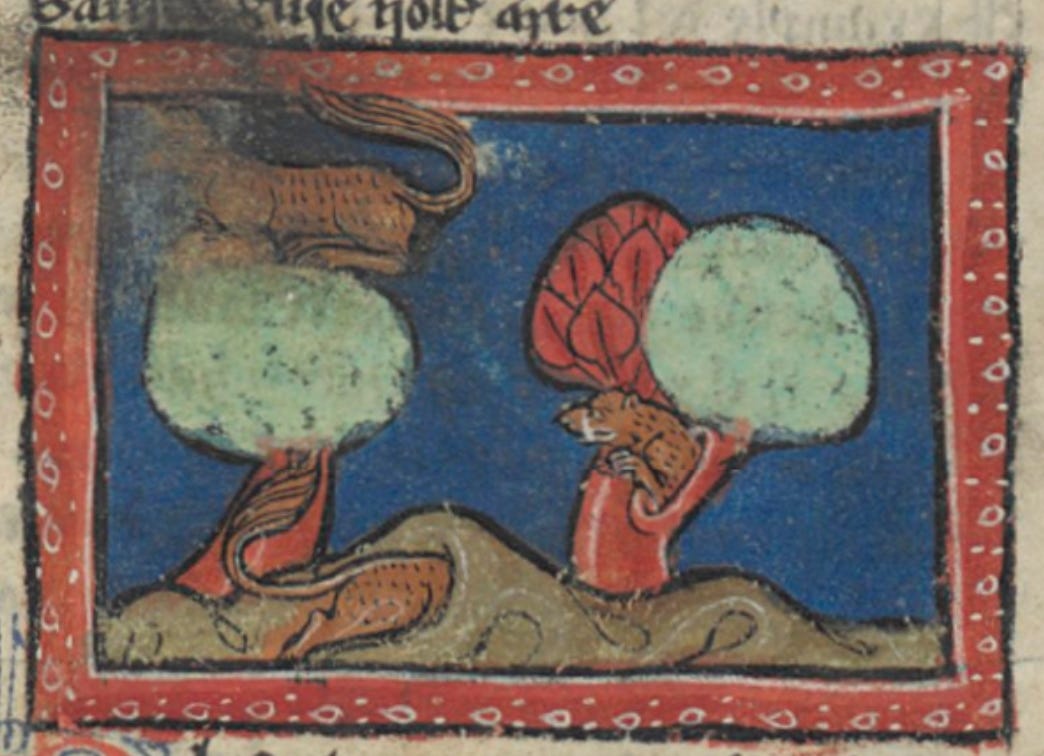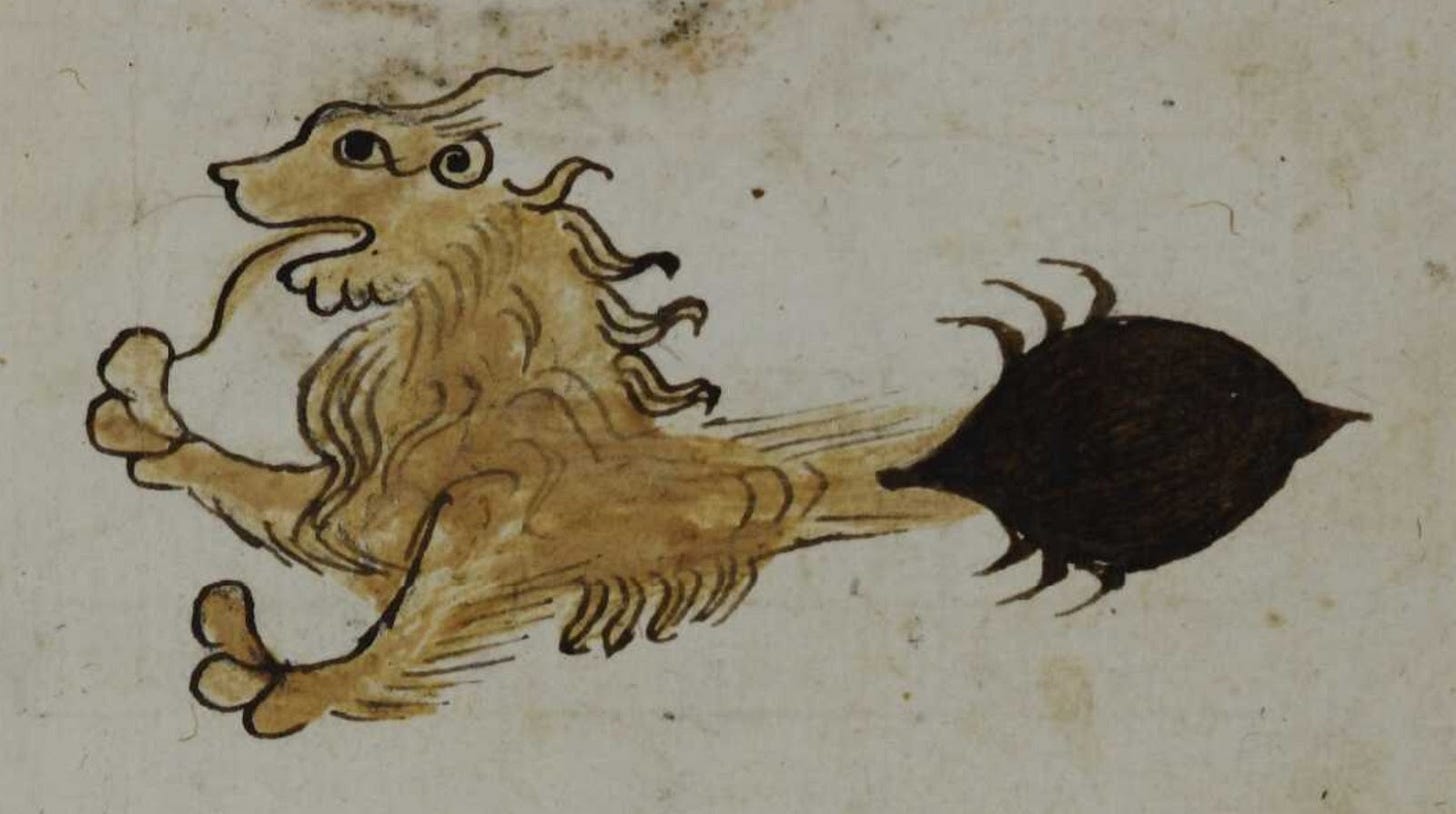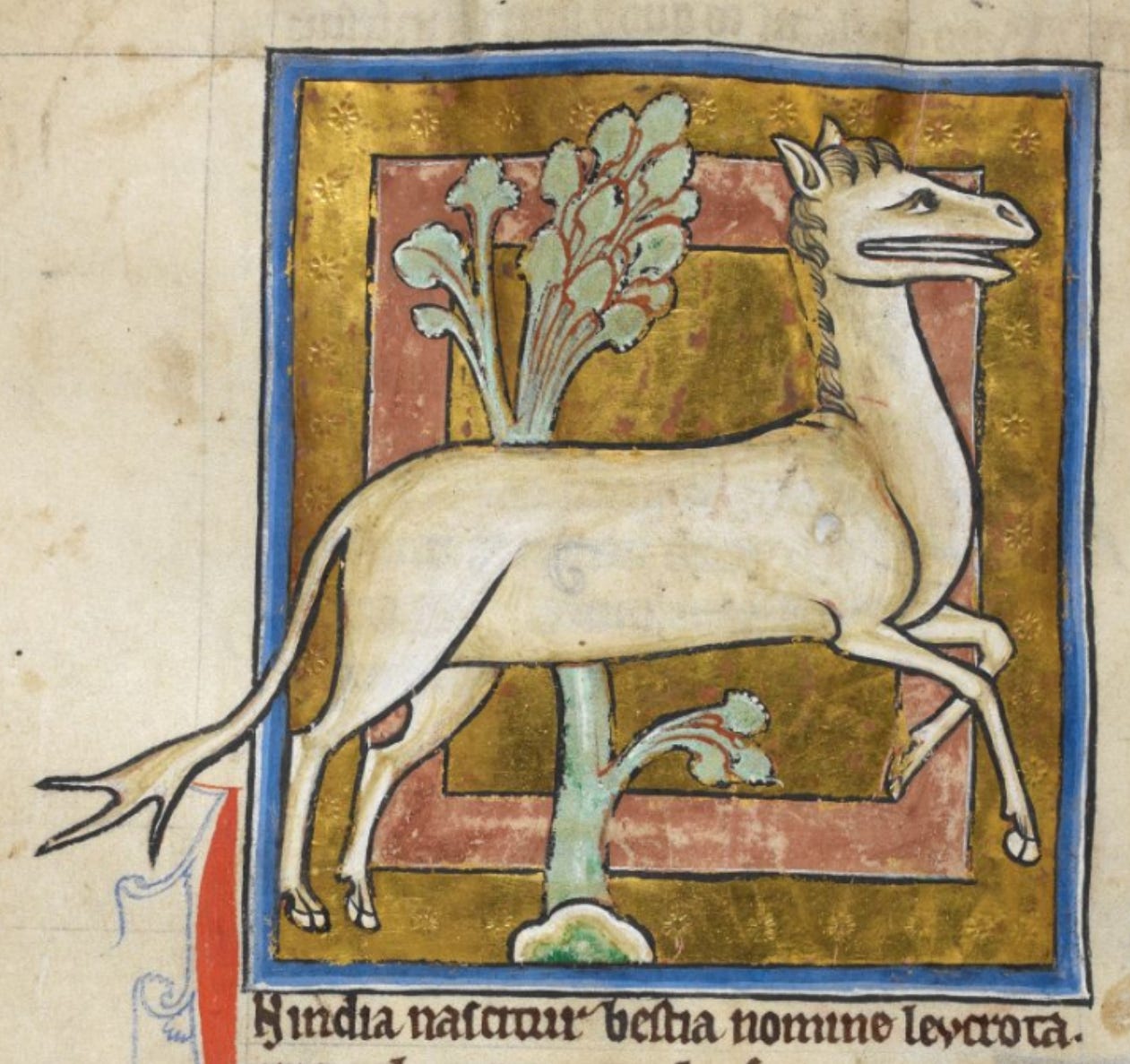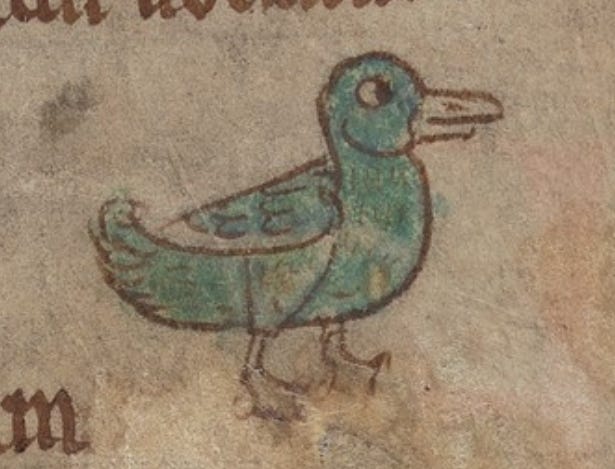7 Fantastical Medieval Beasts No One’s Ever Heard Of
Move over, Griffins and Manticores. It’s time for the Muscaliet and the Bonnacon to have a turn.
Skip to the end (or click here) for a puzzle I’ve made you. My crash course on how to do cryptic puzzles begins here.
Respect where it’s due: Our friends from the Middle Ages were churning out absolutely top-quality content from day one (476 C.E., specifically), and their righteous talent for posting is particularly apparent if you spend any time perusing a medieval bestiary.
Most medieval bestiaries are derived from an early work called the Physiologus—a compendium of ~fun animal facts~ from the ancient world (and especially Pliny, the original animal blogger) with a strongly allegorical vibe in that the descriptions of the animals were supposed to be morally instructive rather than strictly accurate. In the 11th century, the Physiologus was combined with portions of St. Isidore of Seville’s Etymologies—which was essentially the one-man Wikipedia of its day—and the resulting collection of beasts found its way into countless illuminated manuscripts in various forms.
There’s plenty of scholarly discussion about the extent to which these creatures were thought of as being real, allegorical, or somewhere in between, but I’m choosing to spare you that in favor of just meeting and greeting some of the more interesting ones.
The Muscaliet
This little guy has the body of a rabbit, a squirrel’s tail, the hair of a pig, and pointy boar tusks on either side of his mouth. His body runs so hot that any tree he lives in will eventually die, which is evidently an allegory for what happens when pride takes residence in a person. So next time you’re feeling dangerously prideful, think about a prickly little Muscaliet turning the heater all the way up to 11 in the tree that is your body and, um, see if that does anything for you?
The Onocentaur
The Onocentaur (literally “donkey-centaur”) is half-man, half-ass, and judging by the picture, you wouldn’t want to get cornered by either end at a party. The combination of the wild animal with the supposedly rational human is meant to signify man’s hypocrisy as well as his lustful nature, which—again—absolutely avoid this guy if he tries to strike up a conversation. There is a 100% chance that he’s going to talk about Effective Altruism for 20 straight minutes and then try to stick his tongue down your throat.
The Amphisbaena
The amphisbaena (which literally means “going both ways”) has a practical, sensible head where you would expect a head to be, and an absolutely gratuitous head at the end of her tail. Pliny, being his typical shady self in The Natural History, says,
“The amphisbaena has two heads, that is to say, it has a second one at the tail, as though one mouth were too little for the discharge of all that venom.”
You might expect this funny fellow to be an allegory for people who can’t make up their mind, but commentators seem to be mostly concerned about which side it eats from. If you’re also curious about this, the surprisingly reasonable answer is that it “eats lunch with one head and dinner with the other.”
The Ant-Lion
This tragic figure (also known as the formicaleon) has the head of a lion and the body of an ant, and—as if that weren’t bad enough—she tends to starve to death because the lion only wants meat and the ant only wants grain. I’m not sure what this is an allegory of, but it strongly reminds me of the grim horrors that ensue when you can’t agree what to put on Netflix with someone and end up watching Below Deck as a compromise. It’s thought that the whole concept of the ant-lion comes from a mistranslation of a passage in the Bible, which just adds to the shambolic nature of this doomed creature.
The Bonnacon
The bonnacon has a horse’s mane and a bull’s head with prominent curving horns. But these are not the things that Mr. Bonnacon is remembered for. Mr. Bonnacon is remembered because if you chase him, he shoots burning feces out of his butt that can fly as far as two acres. There doesn’t appear to be an allegorical interpretation of this—as far as I can tell, the medievals included the bonnacon in their bestiaries because they found this to be endlessly hilarious. Just look at his face, poor guy.
The Leucrota
The leucrota (or, confusingly, crocotta) was blessed with a stag’s bottom, a lion’s neck, and a badger’s head. Pliny, who I will just say, has a lot to answer for, gleefully and rather disturbingly describes the leucrota as having “the mouth slit up as far as the ears, and one continuous bone instead of teeth.” He goes on to say that it’s a gifted mimic of the human voice, which may explain most podcasts.
The Mergus
Finally, it’s Mergus. He’s just a seabird. Nothing allegorical. No nonsense. Just a seabird. But I’m really rather taken with him.
I have made you a puzzle. The puzzle image is below if you want to print it out like our forebears used to, but you can also fill it in with a click!














What can I say, solid connections you've hereby expertly drawn between bestiaries (& their authors!) of yore and mundane artefacts of modern life! 😂